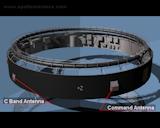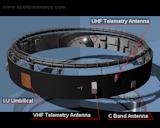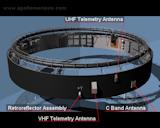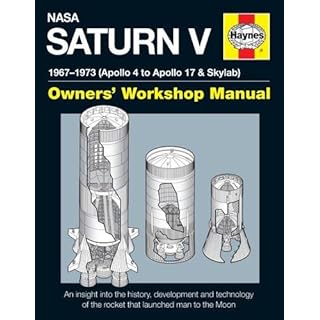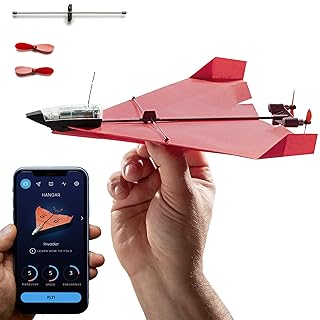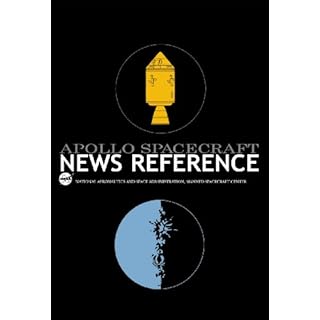Instrument Unit(IU)
- Diameter :260in (6.604m)
- Height :36in (0.9144m)
- Weight(Average) :4500lb (2.04ton)
- Manufacturer:IBM (International Business Machines Federal Systems Div. Huntsville, Ala.)
IU used with Saturn IB is almost the same as the thing developed for Saturn V.
Most of the carried instruments and physical size are really the same as the Saturn V's.
The main functions of IU are the direction control of the rocket, the ignition control of the engine,
the timing control of instruments.
Look
Saturn V Instrument Unit(IU)
and
Computers for Apollo Program
for more information.
Related books and videos
-
The Apollo Guidance Computer: Architecture and Operation

Praxis July 11, 2010 USD40.46
The technological marvel that facilitated the Apollo missions to the Moon was the on-board computer. In the 1960s most computers filled an entire room, but the spacecraft’s computer was required to be compact and low power. Although people today find it difficult to accept that it was possible to control a spacecraft using such a ‘primitive’ computer, it nevertheless had capabilities that are advanced even by today’s standards. This is the first book to fully describe the Apollo guidance computer’s architecture, instruction format and programs used by the astronauts. As a comprehensive account, it will span the disciplines of computer science, electrical and aerospace engineering. However, it will also be accessible to the ‘space enthusiast’. In short, the intention is for this to be the definitive account of the Apollo guidance computer.
-
Digital Apollo: Human and Machine in Spaceflight

The MIT Press September 30, 2011 USD28.21
As Apollo 11's Lunar Module descended toward the moon under automatic control, a program alarm in the guidance computer's software nearly caused a mission abort. Neil Armstrong responded by switching off the automatic mode and taking direct control. He stopped monitoring the computer and began flying the spacecraft, relying on skill to land it and earning praise for a triumph of human over machine. In Digital Apollo, engineer-historian David Mindell takes this famous moment as a starting point for an exploration of the relationship between humans and computers in the Apollo program. In each of the six Apollo landings, the astronaut in command seized control from the computer and landed with his hand on the stick. Mindell recounts the story of astronauts' desire to control their spacecraft in parallel with the history of the Apollo Guidance Computer.
-
Saturn V Apollo Lunar Orbital Rendezvous Planning Guide

Apogee Prime 2011/07/15 USD24.95
The Saturn V Apollo Lunar Orbital Rendezvous Planning Guide is a reprint of a rare document from the early 1960s in which the whole Apollo moon landing mission was presented and illustrated. The book includes a large fold-out of the Apollo mission as well as a fold-out of the Saturn V moon rocket. It includes illustrations of early iterations of the Lunar Module, maps of the Cape Canaveral launch sites, launch schedules for all of the Apollo test flights, detailed specifications and schematics of the Saturn V launch vehicle stages, construction schedules, engine summaries, information on the VAB, mobile crawlers, Umbilical towers, a DVD and more
-
Mission Control

Gravitas Ventures 2017/07/27 USD24.99
At the heart of the Apollo space program and a remarkable decade of achievement was the team who worked in Mission Control.They were born against a backdrop of economic turmoil and global conflict. Some came from a rural lifestyle little changed from the 19th century. Others grew up in a gritty, blue-collar America of mines and smoke stacks. They ranged from kids straight out of college to those toughened by military service. But from such ordinary beginnings, an extraordinary team was born. They were setting out on what JFK called: “The most hazardous, dangerous, and greatest adventure upon which mankind has ever embarked” and through their testimony ? and the supporting voices of Apollo astronauts and modern NASA flight directors ? the film takes us from the faltering start of the program through the Mercury and Gemini missions, the tragedy of the Apollo 1 fire to the glories of the Moon landings.




